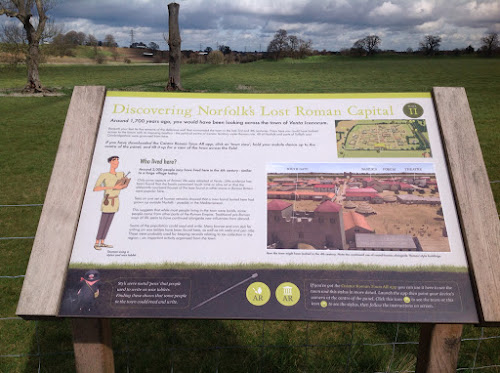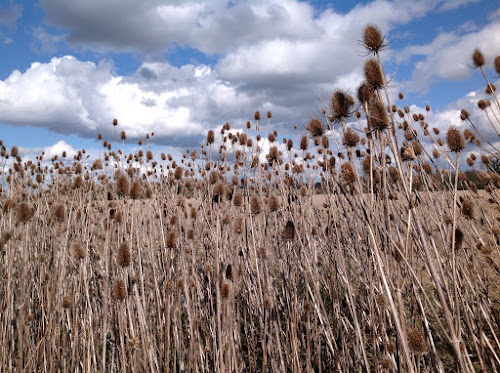Okay, so this is a bit of a mammoth post, but I hope you find it interesting....
First, the harvests....
On Tuesday I got back from my trip away, and after checking on my seedlings (thank you Jan for looking after them) I had a rummage around the garden to cook us something healthy for tea. We're in a bit of a weird but exciting time, as Jan started a new job last week and *drum roll*.....I've taken voluntary redundancy as of the end of March...ooh! So I'm taking a little break from (paid) work before hopefully finding something interesting to get stuck in to. In the meantime I'll be focussing on growing us lots of food, doing some DIY around the house, having a de-clutter and being super-thrifty (more so than usual, if that's even possible....ok I can definitely cut down on the chocolate)
So, back to the harvests - I rummaged-up some young nettle tops and garlic mustard (aka jack by the hedge) from the garden. I haven't got round to doing any weeding out there yet so you never know what will spring up.
Plus there were a few spring greens (Tender leaves from a sprout plant that didn't sprout and a few leaves from a small kale plant)
Nettle leaves snipped off
Which went into a lovely fresh-tasting soup, along with a bit of carrot and drizzle of kefir (kefir is fermented milk, which jan's been making for us recently. It's meant to be good for your tummy biome)
That evening, I was having a quick (or not so quick) look on Facebook and spotted that Norwich Farmshare needed some help on their land. Farmshare works a bit like a veg box scheme, where you pay monthly to get a veg/ fruit 'share' each week that you go and collect from the hub, but also help out a few hours a year on the farm or in other supportive roles e.g. With harvesting, weeding etc. I'd wanted to get involved with them for a while but hadn't had time (and also don't usually need too many extra veg).
So the next day I got the bus to the farm on the outskirts of Norwich. They're actually moving to a new site this year and have to leave the current one as a blank canvas again, as it was when they started renting it years ago (i.e. a big flat field). This means the work is mainly taking everything apart (which is quite good fun) and getting in the last of the harvests. They have two really big poly tunnels (yes I am jealous) currently full of beautiful salad and oriental greens. I was allowed to pick some for helping out...yum
Gorgeous
Spicy mustard greens, yummy
And then at the end of the second day I was given a huge 'share' of veg too for helping ...I was really touched by this as I hadn't been expecting anything...wow
So we've been having really nice salad sandwiches (which is good timing as my corn salad is starting to bolt) and I used some the greens in a noodle soup
Plus we made a big roast (much tastier than it looks!)
I also had a few of my own leeks from the allotment so made a big pot of leek and potato soup for the freezer (and picked a few more nettles to add into it aswell). I took a tub of tomato and squash mix from the freezer as a swap.
Building with Straw Bales course
So, last weekend I went on a 3 day course at Stanmer Park in Brighton. It was sort of a way of marking the end of my old job and hopefully an exciting new beginning.
The course was based at Earthship Brighton. You can't really see from this pic but it's built into the hillside and the walls are all made from rammed-earth tyres
Stanmer Park is a lovely setting too. I got the train there each day from my sister's house in the city centre and had a beautiful walk each morning and evening across the park to and from the station.
Inside the Earthship the first part of the building is like a greenhouse. One of the volunteers is growing veggie seedlings
Some of the walls use glass bottles to let light through
Anyway...onto the straw bales
Straw bale buildings are brilliant for lots of reasons including; the straw is quick to grow and doesn't use much energy to produce compared with conventional building materials; they have great insulation (heat and noise); they will last for decades if not hundreds of years if looked after properly (i.e. kept dry by looking after the render); they store carbon; they provide a healthy internal environment (no nasty chemicals). They are also biodegradable at the end of their life and as they can be deemed non-permanent, sometimes planning permission will be given in a particular location whereas it wouldn't for a conventional build.
To build with straw bales you need to plan, plan, plan ahead. I'll just mention a few of the basic things which spring to mind...
All bales differ in width, height and density, even from the same batch, so before ordering your bales you need to go check out with the farmer and work out the average size of a bale from his machine (so you /your architect can design the house around the bale size, this makes things a lot easier later on). You also need to take into account compression on the height of the bales.
When designing your building you need to make allowances for doors and windows (again, design these to tie in with either full or half bales based on your average bale size). For our course we had a certain footprint that we had to make best use of. We were using the Nebraskan method, where the bales are load-bearing (as opposed to a design such as timber-frame, where the bales are 'just' infilled)
Working on the base
Measuring for the noggin locations (support under each bale). The holes in the noggins are for stakes that the bales get set on to keep them in place
Doorway
Post locations for a window. The bales need notching (cutting out) for posts. And we learnt how to make half bales too
We made our own stakes from hazel and birch
This was fun (and the stakes reminded me of Buffy the Vampire Slayer, awesome show). This is called a shave horse..it really looks like a horse!
The bales were sorted into different densities (most dense for the bottom course and around doors and windows). They also needed 'dressing' which involved evening out all the edges to get a better fill.
Temporary corner braces to help with keeping the bales in alignment as the walls went up
We didn't have time to get very high, hehe (Plus would have needed scaffolding) but we did get the top plate on (that the roof would fix to)
Bales even have different faces (cut / folded) so we alternate layers to help the render stick evenly (we didn't learn how to render, that's another course). The top plate is in two halves to make it easier to handle when lifting on top of the walls
This wall looks pretty good

So that is a very very brief rundown, there is way more to it and I am definitely not an expert....But I really enjoyed the course and it's given me a good understanding of the things to consider when building with bales, plus we learned lots of practical skills that will be useful in other ways too.
One day I hope to have a bit of land to build my own sustainable house (that is a very big hope!) or even just a workshop, and this would definitely be one method to consider. I'll keep an ear open to see if anyone around here is building one to see if I can get involved. Who knows, maybe Farmshare will want a straw bale workshop / community building on their new land?
Brighton Permaculture run two of these courses a year...the next one is in July if you're interested. They also run several other Eco build courses (not sure I can justify doing another one yet!)
Phew, Thanks for persevering to the end. I'm linking in with Harvest Monday hosted by Dave at Our Happy Acres





















































